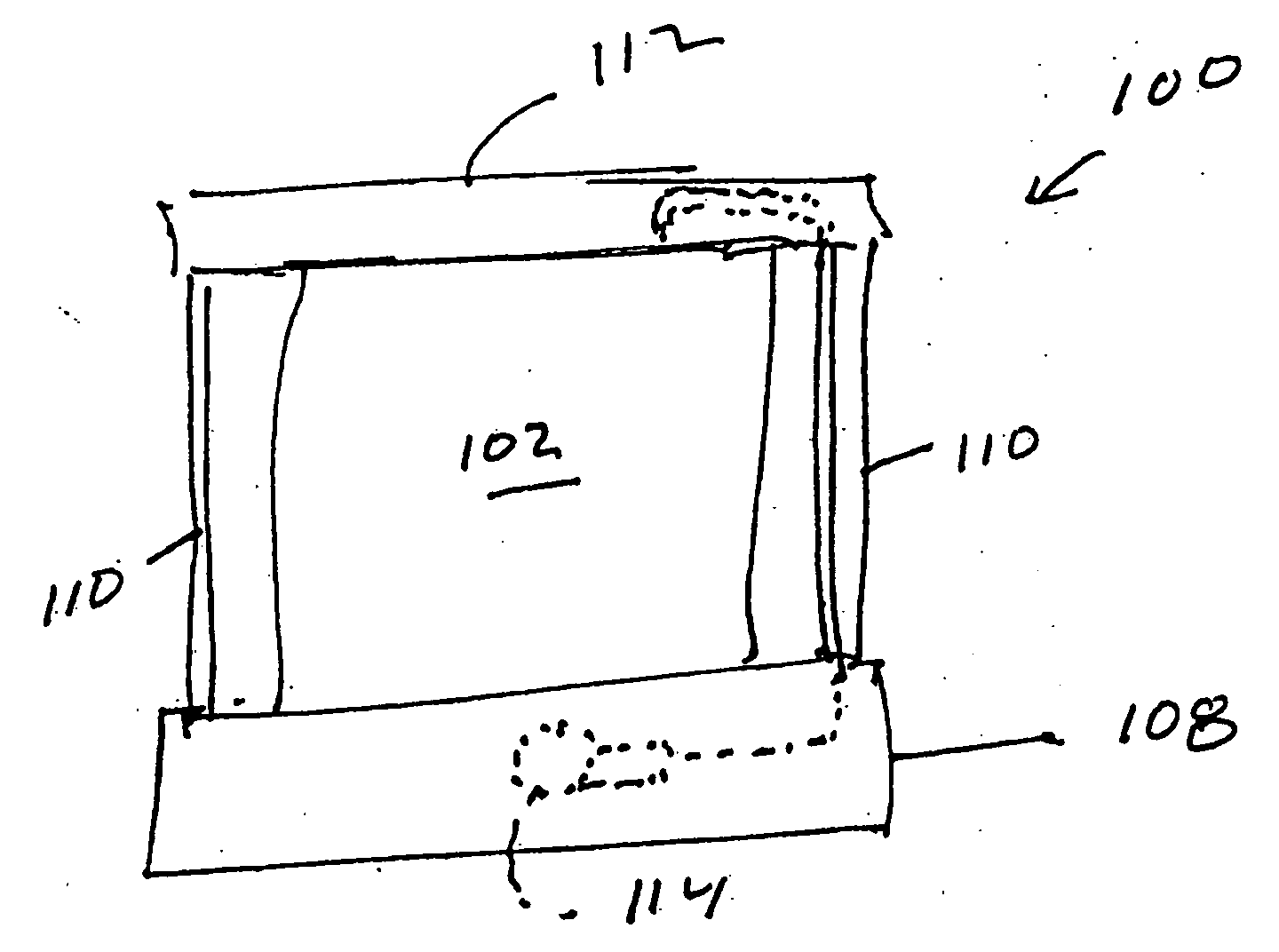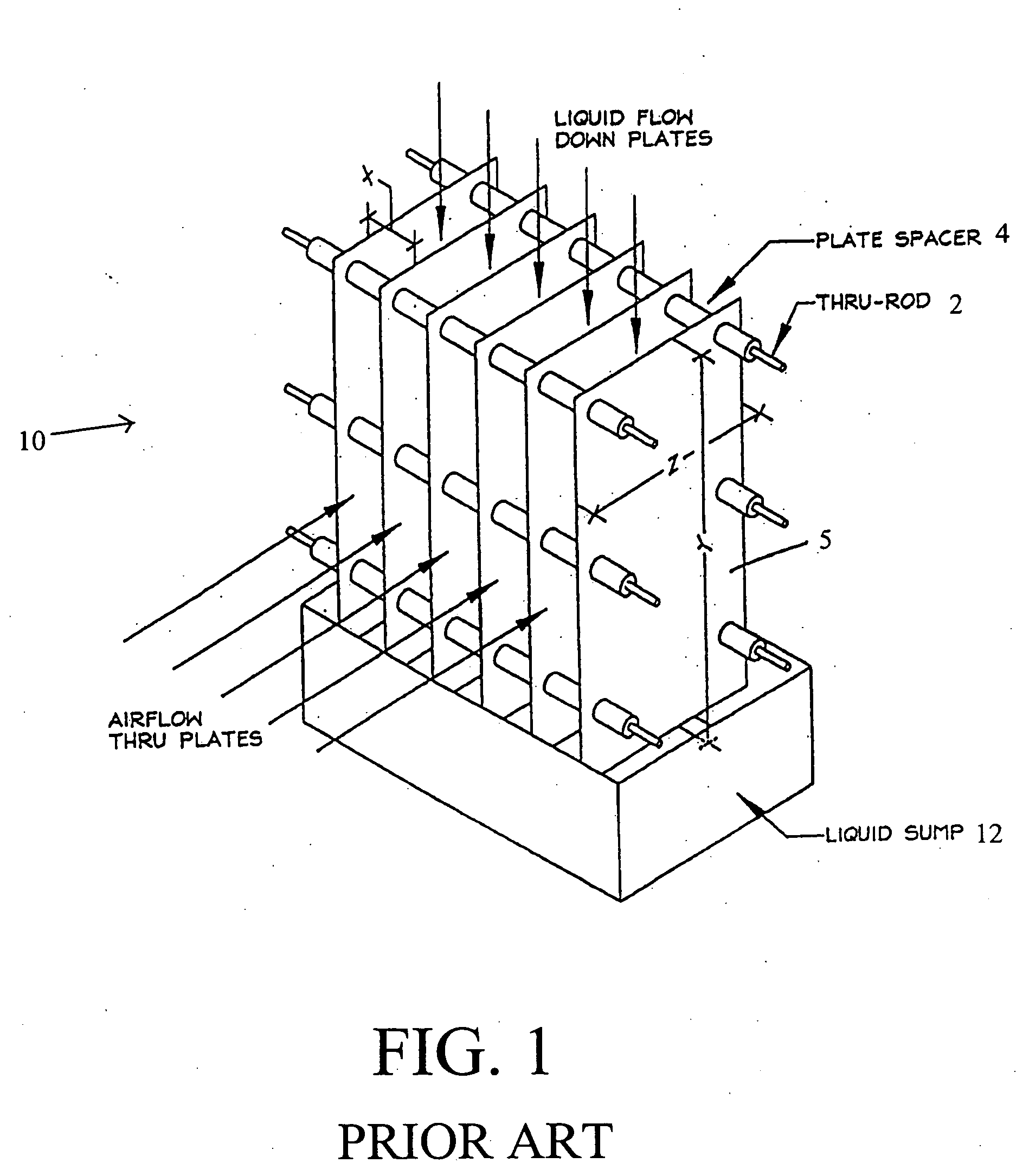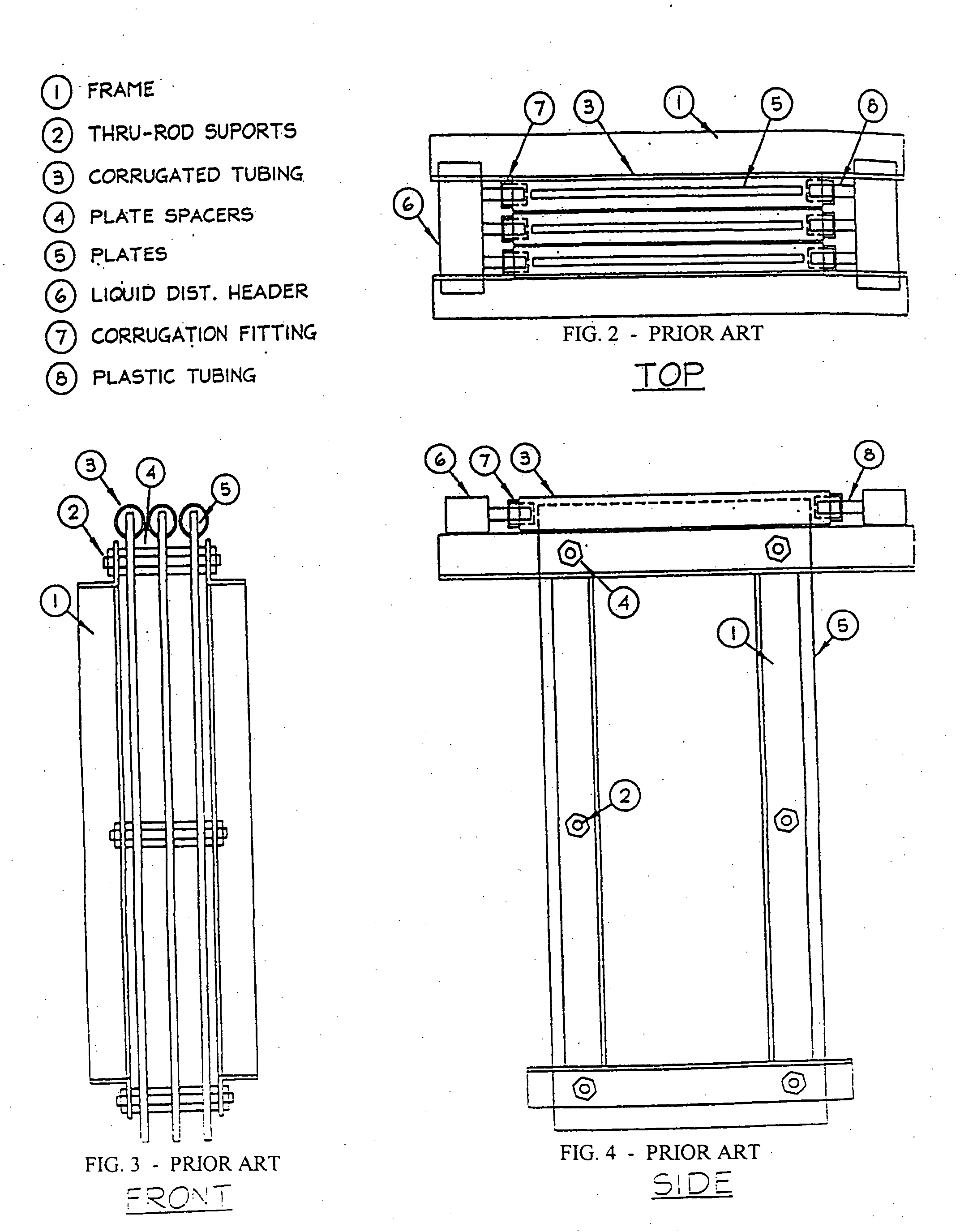Removal of carbon dioxide from air
a technology of carbon dioxide and air, applied in the direction of combustion-air/fuel-air treatment, separation process, filtration separation, etc., can solve the problems of reducing the efficiency of air pressure washing process, consuming significant energy for air pushing through such devices, and comparatively high pressure loss during washing process
- Summary
- Abstract
- Description
- Claims
- Application Information
AI Technical Summary
Benefits of technology
Problems solved by technology
Method used
Image
Examples
Embodiment Construction
[0027] The present invention is based on the use of an open cell rigid foam as the air / liquid exchanger. Employing open cell rigid foams as the air / liquid exchanges has an advantage in that they not only provide the air / liquid exchange surface, but also the cells become the support structure for the air / liquid interface. Accordingly, the framing or superstructures required for supporting the sheets such as in our aforesaid provisional application may be reduced or eliminated.
[0028] More particularly, and referring to FIGS. 5-8, an air scrubber unit in accordance with one aspect of the present invention consists of a wind collector 100 comprising a foam block 102 having a plurality of through channels 104 carved through the foam (or molded into the foam) to allow passage of air. Block 102 is mounted within a frame which includes a pan 108, uprights 110 and top 112. Pan 112 serves as a liquid sump for holding a sorbent such as concentrated sodium hydroxide solution. In a preferred em...
PUM
| Property | Measurement | Unit |
|---|---|---|
| Pore size | aaaaa | aaaaa |
| Pore size | aaaaa | aaaaa |
| Pore size | aaaaa | aaaaa |
Abstract
Description
Claims
Application Information
 Login to View More
Login to View More - R&D
- Intellectual Property
- Life Sciences
- Materials
- Tech Scout
- Unparalleled Data Quality
- Higher Quality Content
- 60% Fewer Hallucinations
Browse by: Latest US Patents, China's latest patents, Technical Efficacy Thesaurus, Application Domain, Technology Topic, Popular Technical Reports.
© 2025 PatSnap. All rights reserved.Legal|Privacy policy|Modern Slavery Act Transparency Statement|Sitemap|About US| Contact US: help@patsnap.com



